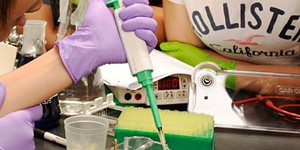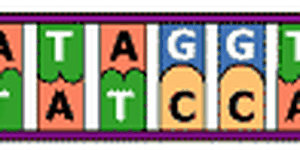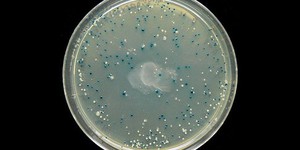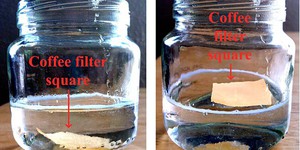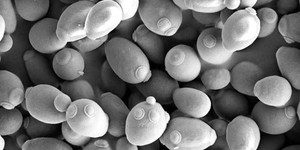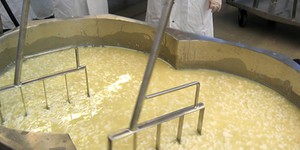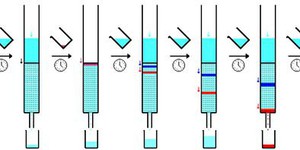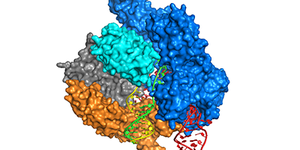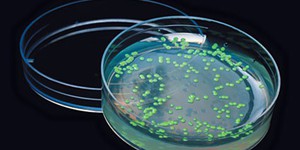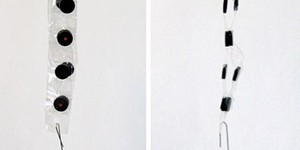Biotechnology Science Projects (30 results)
Yogurt, biofuel, biodegradable plastics, and antibiotics are all examples of products based on biotechnology research and manufacturing techniques. What else will we be able to create as we use biotechnology in new ways?
|
Select a resource
Sort by
|
Genetically modified organisms (GMOs) are organisms whose DNA have been manipulated to give them new traits. In genetically modified (GM) food crops traits like resistance to drought or pesticide might be added, or the crop may have been made more nutritious, or the taste may be altered to give you something like the impossible burger. Are there GMOs in your favorite foods? Many countries have implemented or are in the process of implementing GMO labeling on foods, but with a little bit of…
Read more
Featured
Have you heard that garlic powder is supposed to inhibit the growth of bacteria? Which do you think would make a better disinfectant: a solution of garlic powder or a solution of bleach? This project shows you a straightforward way to compare the effectiveness of different disinfectants (or other antimicrobial agents), by measuring zones of inhibition on a culture plate.
Read more
Do you like solving mysteries? In this experiment, you can find out how a DNA fingerprint can help you figure out whodunit. The answer might just be in the "sequence" of events!
Read more
Can bacteria be altered to produce life-saving insulin for diabetics? Or change color to indicate the presence of a harmful toxin? Yes, it can! Using biotechnology, scientists work daily on problems like these. It starts with selecting a gene you want bacteria to produce and creating a sequence of DNA that has that gene and a promoter that will help express it at the right time and at the right levels. The next hurdle is actually getting this engineered DNA into the bacteria and…
Read more
Enzymes speed up chemical reactions by factors of at least a million. Now that's acceleration! This project investigates how temperature affects how fast these enzymatic reactions occur.
Read more
Can you imagine a glowing loaf of bread? You might not be able to make the whole loaf glow, but you can get baker's yeast to fluoresce! The way to do this is to modify the genetic information of the yeast organism. The technology that is used to do this is called genetic engineering. With genetic engineering, you can insert a fluorescent protein gene from a jellyfish into yeast cells, so they start glowing under blue light! Do this project to see for yourself!
Read more
Have you ever gone to pour yourself a cup of milk and all you get is milk clumps? What happened to the milk is called coagulation, which is the mechanism that occurs when proteins in the milk clump together. While you do not necessarily want this in your milk, without coagulation (or curdling), there would not be any cheese or yogurt, which is why it is a very important process in the food industry. But what makes milk curdle? In this science project you will use pineapple juice to curdle milk…
Read more
What color is grape soda? If you pour it into a clear glass you can easily see it is purple, but that is usually not its natural color. Manufacturers add red and blue dye to the soda. The dyes mix together and you get purple soda. What if you wanted to un-mix the dyes, could you? Yes! In a chemistry laboratory, using a technique called column chromatography, you could separate the two dyes again. But what about at home, can you use low-tech supplies to do the same thing? In this science…
Read more
Many scientists are currently very excited about CRISPR, as it has the potential to revolutionize gene editing. But what exactly is CRISPR and what does it do? CRISPR is a novel tool in gene editing that allows the modification of genetic DNA at specific target sites in many different organisms. Researchers have high hopes that this technology can, one day, cure genetic diseases, as mutated DNA sequences can easily be corrected. In this project, you will use CRISPR to mutate a DNA sequence…
Read more
What is expression cloning and how is it used in the biotechnology industry? How are plasmids constructed for use in a bacterial expression system? You can investigate these questions and more using bacterial expression kits meant for high school classes. You will need a laboratory space equipped to grow bacteria and carry out simple molecular biology. A kit with plasmids and bacterial cells to transform are also needed. Here are two possibilities:
BioBuilder What a Colorful World Kit …
Read more
How do scientists "copy" DNA? They use a process called the Polymerase Chain Reaction, or PCR. The key to making this process work is having a short piece of DNA, called a primer, that will stick to the larger piece of DNA you want to copy, called a template. In this science project, you will test how the number of matches and mismatches in a primer will affect its ability to stick, or anneal, to the DNA template during PCR.
Read more
|
Explore Our Science Videos
The Scientific Method: Steps and Examples
Turn Milk into Plastic! Lesson Plan Introduction
Popsicle Stick Chain Reaction -STEM activity

